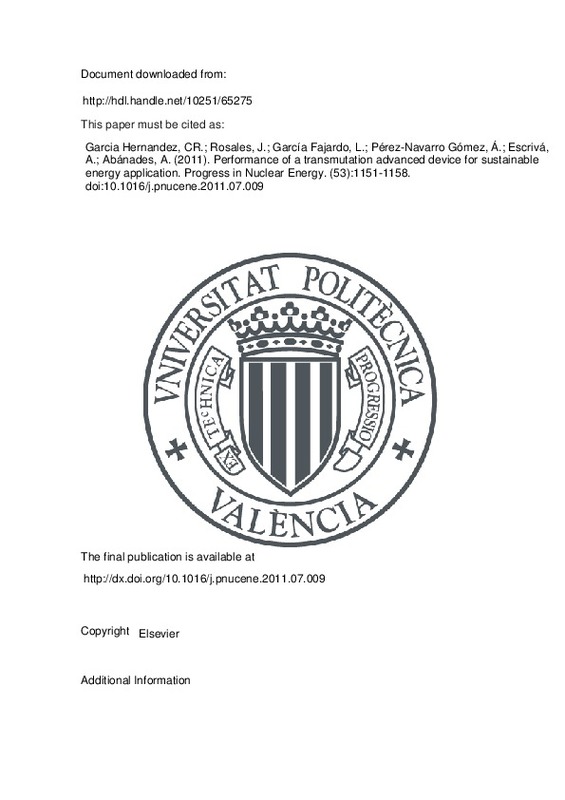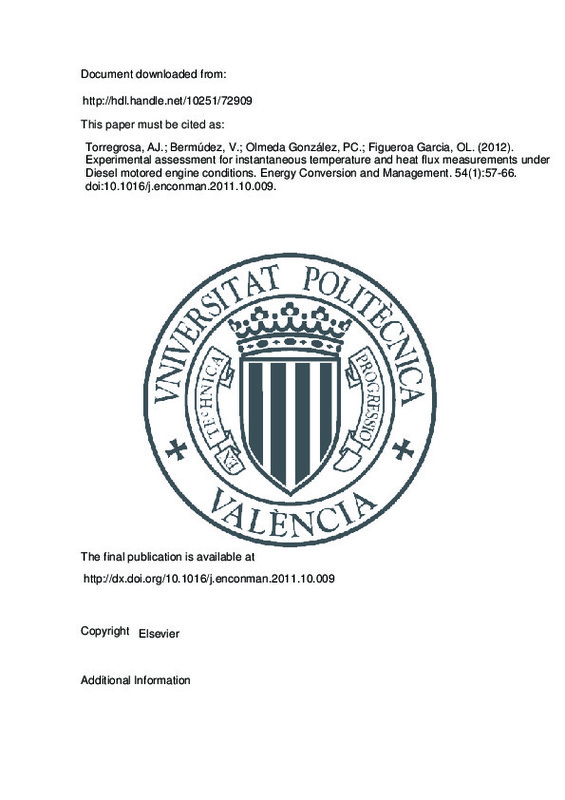JavaScript is disabled for your browser. Some features of this site may not work without it.
Buscar en RiuNet
Listar
Mi cuenta
Estadísticas
Ayuda RiuNet
Admin. UPV
Performance of a transmutation advanced device for sustainable energy application
Mostrar el registro sencillo del ítem
Ficheros en el ítem
| dc.contributor.author | Garcia Hernandez, Carlos Rafael
|
es_ES |
| dc.contributor.author | Rosales, J.
|
es_ES |
| dc.contributor.author | García Fajardo, Laura
|
es_ES |
| dc.contributor.author | Pérez-Navarro Gómez, Ángel
|
es_ES |
| dc.contributor.author | Escrivá, A.
|
es_ES |
| dc.contributor.author | Abánades, A.
|
es_ES |
| dc.date.accessioned | 2016-06-06T07:19:24Z | |
| dc.date.available | 2016-06-06T07:19:24Z | |
| dc.date.issued | 2011-11 | |
| dc.identifier.issn | 0149-1970 | |
| dc.identifier.uri | http://hdl.handle.net/10251/65275 | |
| dc.description.abstract | [EN] Preliminary studies have been performed to design a device for nuclear waste transmutation and hydrogen generation based on a gas-cooled pebble bed accelerator driven system, TADSEA (Transmutation Advanced Device for Sustainable Energy Application). In previous studies we have addressed the viability of an ADS Transmutation device that uses as fuel wastes from the existing LWR power plants, encapsulated in graphite in the form of pebble beds, cooled by helium which enables high temperatures (in the order of 1200 K), to generate hydrogen from water either by high temperature electrolysis or by thermochemical cycles. For designing this device several configurations were studied, including several reflectors thickness, to achieve the desired parameters, the transmutation of nuclear waste and the production of 100 MW of thermal power. In this paper new studies performed on deep burn in-core fuel management strategy for LWR waste are presented. The fuel cycle on TADSEA device has been analyzed based on both: driven and transmutation fuel that had been proposed by the General Atomic design of a gas turbine-modular helium reactor. The transmutation results of the three fuel management strategies, using driven, transmutation and standard LWR spent fuel were compared, and several parameters describing the neutron performance of TADSEA nuclear core as the fuel and moderator temperature reactivity coefficients and transmutation chain, are also presented. © 2011 Elsevier Ltd. All rights reserved. | es_ES |
| dc.description.sponsorship | One of the authors (C Garcia) thanks Universidad Politecnica de Valencia for the support received from its INNOVA programme to finance his stay at the IIE to complete this study | |
| dc.language | Inglés | es_ES |
| dc.publisher | Elsevier | es_ES |
| dc.relation.ispartof | Progress in Nuclear Energy | es_ES |
| dc.rights | Reserva de todos los derechos | es_ES |
| dc.subject | Nuclear waste | es_ES |
| dc.subject | Transmutation | es_ES |
| dc.subject | Very high temperature reactor | es_ES |
| dc.subject | Accelerator driven system | es_ES |
| dc.subject | Deep burn | es_ES |
| dc.subject | Fuel cycle | es_ES |
| dc.subject | Fuel management | es_ES |
| dc.subject | Fuel wastes | es_ES |
| dc.subject | Gas turbine- modular helium reactors | es_ES |
| dc.subject | Gas-cooled | es_ES |
| dc.subject | High temperature | es_ES |
| dc.subject | High temperature electrolysis | es_ES |
| dc.subject | Hydrogen generations | es_ES |
| dc.subject | In-core fuel management | es_ES |
| dc.subject | LWR spent fuel | es_ES |
| dc.subject | New study | es_ES |
| dc.subject | Nuclear waste transmutation | es_ES |
| dc.subject | Pebble beds | es_ES |
| dc.subject | Sustainable energy | es_ES |
| dc.subject | Temperature reactivity coefficient | es_ES |
| dc.subject | Thermal power | es_ES |
| dc.subject | Thermochemical cycles | es_ES |
| dc.subject | Transmutation fuels | es_ES |
| dc.subject | Design | es_ES |
| dc.subject | Energy conservation | es_ES |
| dc.subject | Equipment | es_ES |
| dc.subject | Fuels | es_ES |
| dc.subject | Helium | es_ES |
| dc.subject | High temperature gas reactors | es_ES |
| dc.subject | Hydrogen | es_ES |
| dc.subject | Hydrogen production | es_ES |
| dc.subject | Radioactive wastes | es_ES |
| dc.subject | Spent fuels | es_ES |
| dc.subject | Waste management | es_ES |
| dc.subject | Energy conversion | es_ES |
| dc.subject.classification | INGENIERIA ELECTRICA | es_ES |
| dc.subject.classification | INGENIERIA NUCLEAR | es_ES |
| dc.title | Performance of a transmutation advanced device for sustainable energy application | es_ES |
| dc.type | Artículo | es_ES |
| dc.type | Comunicación en congreso | |
| dc.identifier.doi | 10.1016/j.pnucene.2011.07.009 | |
| dc.rights.accessRights | Abierto | es_ES |
| dc.contributor.affiliation | Universitat Politècnica de València. Departamento de Ingeniería Eléctrica - Departament d'Enginyeria Elèctrica | es_ES |
| dc.contributor.affiliation | Universitat Politècnica de València. Departamento de Ingeniería Química y Nuclear - Departament d'Enginyeria Química i Nuclear | es_ES |
| dc.description.bibliographicCitation | Garcia Hernandez, CR.; Rosales, J.; García Fajardo, L.; Pérez-Navarro Gómez, Á.; Escrivá, A.; Abánades, A. (2011). Performance of a transmutation advanced device for sustainable energy application. Progress in Nuclear Energy. (53):1151-1158. doi:10.1016/j.pnucene.2011.07.009 | es_ES |
| dc.description.accrualMethod | S | es_ES |
| dc.relation.conferencename | International Nuclear Atlantic Conference (INAC) | |
| dc.relation.conferencedate | September 27- October 02, 2009 | |
| dc.relation.conferenceplace | Rio de Janeiro, Brasil | |
| dc.relation.publisherversion | http://dx.doi.org/10.1016/j.pnucene.2011.07.009 | es_ES |
| dc.description.upvformatpinicio | 1151 | es_ES |
| dc.description.upvformatpfin | 1158 | es_ES |
| dc.type.version | info:eu-repo/semantics/publishedVersion | es_ES |
| dc.description.issue | 53 | es_ES |
| dc.relation.senia | 208781 | es_ES |
| dc.contributor.funder | Universitat Politècnica de València |







![[Cerrado]](/themes/UPV/images/candado.png)


